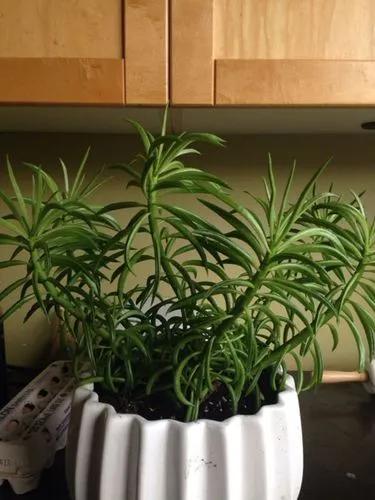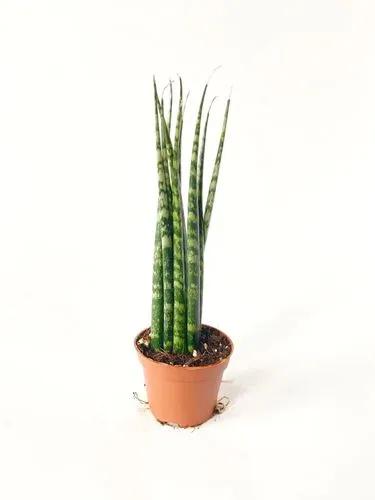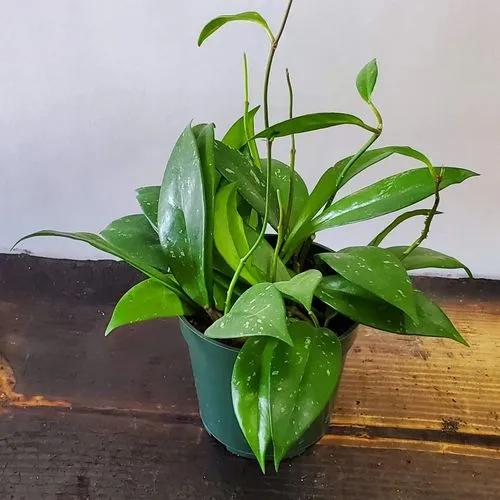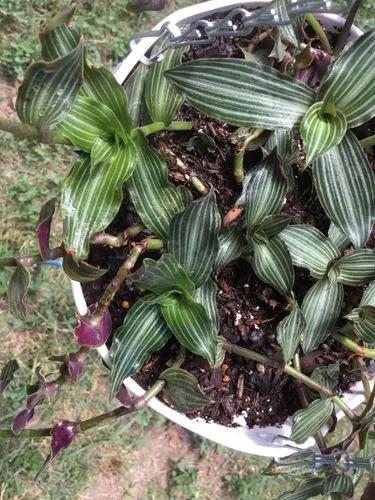Just like the breathtaking blend of the morning sun's red, pink, and orange hues, Hoya ‘Sunrise’ charms with its striking foliage pattern. Its trailing vines and bright leaves have enchanted many plant lovers around the world.
Hoya Sunrise Care
Hoya 'Sunrise'



Commonly known as Hoya ‘Sunrise’, this perennial trailing vine is a cultivar of Hoya lacunosa and Hoya obscura plants. Just like other Hoya species, this plant belongs to the Apocynaceae family and has a trailing growing habit. Grown indoors, this plant grows 2-3 feet (60-90 cm) long and often needs a trellis for support. The vines of Hoya Sunrise are covered with variegated lance-shaped foliage. The leaves display a unique combination of orange and red patterns and have a glossy, waxy texture. The plant produces clusters of light-purple blooms with yellow waxy star-shaped centers.
How to Care for the Plant

Water

Just like most succulent plants, Hoya ‘Sunrise’ needs little watering. Give it a deep drink once a week in summer and once every two weeks in winter. It’s recommended to let the soil dry out almost completely before hydration.

Pruning

As a trailing plant, Hoya ‘Sunrise’ is pruning-tolerant. It’s best to remove the leggy and overgrown branches with sterile scissors in spring or summer to maintain the plant’s health. It’s important to cut under the node.

Fertilizer

Nourishing Hoya ‘Sunrise’ monthly with a nitrogen-rich fertilizer would help the plant to maintain its general health. It’s recommended to dilute 3-2-1 NPK fertilizer to the half-recommended dose and feed the plant every month.

Sunlight

Hoya ‘Sunrise’ would benefit from several hours of direct sunlight exposure. In fact, it’s the sun that allows the red hue to appear on the foliage. It’s best to keep this Hoya species where it can receive morning sun and afternoon shade.

Soil

Hoya ‘Sunrise’ grows best in well-draining, nutrient-rich soil. Opt for a slightly acidic to neutral (6-7 pH ) potting mix and add some perlite or vermiculite to improve drainage. It’s also recommended to put 2 in (5 cm) of pebbles at the bottom of the pot to avoid standing water issues.

Propagation

Stem cutting is the quickest way to propagate Sunrise Waxvine. Cut a healthy 6-8 in (15-20 cm) long stem under the node with sterile scissors. Dip the cut end into the rooting hormone and place it in a well-draining potting mix. Keep the cutting under indirect light and moisten the ground regularly to let it enroot. Spring and summer is the best time for Hoya plant propagation.

Temperature

A mild temperature of 62-78°F (17-25°C) is what this plant enjoys the most. Keep this Hoya species away from droughts and air vents to avoid temperature fluctuations.

Container

As Hoya Sunrise is not a water-loving species, it’s best to choose a pot made of organic materials such as terra cotta or unglazed clay. Such materials would ensure proper root aeration. It’s also recommended to choose a container that is 2-3 times bigger than the plant's root ball and ensure the pot has at least one drainage hole.

Fun fact

Unlike any other Hoya species, Hoya ‘Sunrise’ enjoys direct sunlight. It even changes foliage color and bursts with a bright yellow-to-orange hues combination.

Popularity

97 people already have this plant 18 people have added this plant to their wishlists

Common pests

Pests like mealybugs tend to affect this Hoya species the most often. If there's any webbing on the foliage or you spot stunted plant growth, spray the greenie with neem oil solution or insecticidal soap.

Frequent diseases

As a drought-tolerant plant, Hoya Sunrise can fall victim to leafspot and root rot coming from overwatering. In case you spot any disease signs, such as wilting foliage or spots on the leaves, treat the plant with a fungicide.

Botanist’s tips

Discover more plants with the list below
Popular articles






